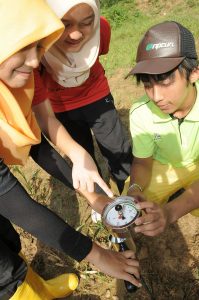Performance Assessment is a way to integrate not only students’ knowledge and competencies but also the teaching and assessment process. Students will learn in a more contextualized and deep way!

What is a performance assessment?
This type of assessment evaluates students’ knowledge in a more complex way because students need to show what they know and are able to do through a practical and contextualized activity (Darling-Hammond & Adamson, 2010). In this sense, students produce something, such as an experiment, a performance, a report, research, etc that materialize what they have learned.
Moreover, performance assessment gives teachers the space to think about assessment beyond a way of measuring student learning. This type of assessment is also an opportunity for student learning since they may understand better a concept or develop a new skill during a performance assessment (Darling-Hammond & Adamson, 2014).
Differences between performance task and performance assessment
The biggest difference between performance tasks and performance assessments is that the latter is designed for students to demonstrate a group of skills and knowledge acquired during a couple of performance tasks.
Teachers might design a series of three or four performance tasks (for example, one for each week of class). Each one of these performance tasks has the purpose of developing different skills and knowledge. Consequently, the final performance assessment of this course should give the opportunity to students to demonstrate all skills and knowledge developed during the four performance tasks.
One common way in which performance tasks might be designed is through project-based learning where students are invited to develop a topic connecting classroom knowledge with some real world, community or contemporary topic (Lenz, Wells & Kingston, 2015).
Performance assessment has the purpose of helping teachers (and students) understand what students have (or have not) learned over a period by getting them to apply and practice in a contextualized situations.
How to design a performance assessment?
The National Science Teacher Association (NSTA) has an interesting article with steps to help you design a performance assessment. Below, we summarize these five steps:
Step 1: Unpack the performance expectation: Teachers should understand their expectations or in other words what they expect students to achieve at the end of the lesson/ classroom. Thus, teachers need to evaluate if the performance assessment is really accessing what they want. In this step, teachers can use curriculum standards to better align their expectations with the performance assessment.
Step 2: Identify a rich and authentic phenomenon: the richness of performance assessment is exactly its characteristic of being contextualized. Therefore, teachers should pay attention to choosing a phenomenon that allows students to apply their knowledge and skills in an authentic way.
Step 3: Develop prompts: teachers should develop prompts and questions that guide students throughout the process without taking them the opportunity to discover and test their hypotheses and assumption because these experiences are essential to produce deep learning.
Step 4: Create scoring guides: teachers should create rubrics or order types of scoring guides for students during the process. These guides help students to understand the different kinds of activities and levels of expectations teachers expect them to complete.
Step 5: Pilot, score, and revise: before putting performance assessments in practice, it would be important to test them to analyze if they attend what you want and identify possible problems.

Performance Assessment Tools and Resources
The Performance Assessment Bank has resources for several subjects. However, you can also find specific resources for the following areas:
Art:
Language:
Columbia University: Teachers’ College Reading and Writing Project
Science:
Performance Assessment Links in Science
Stanford NGSS Curriculum & Assessment
Math:
Illustrative Mathematics Tasks
The Mathematics Assessment Project
Social Science:
The National Council for the Social Studies: Performance-Based Assessment Clearinghouse
C3 Inquiry Model and C3 Teachers from the New York State Social Studies K12 Resource Toolkit project
Physical Education:
References
Darling-Hammond, L., & Adamson, F. (2014). Beyond the bubble test: How performance assessments support 21st-century learning. John Wiley & Sons.
Darling-Hammond, L. & Adamson, F. (2010). Beyond basic skills: The role of performance assessment in achieving
21st century standards of learning. Stanford, CA: Stanford University.
Lenz, B., Wells, J., & Kingston, S. (2015). Transforming schools using project-based learning, performance assessment, and common core standards. John Wiley & Sons.
Guest post by Peer Tutor Ariane Faria dos Santos (Ph.D. EDCP), Dec. 2021

